The Evolution of Golf Fashion: From Pastels to Performance Wear
Explore the evolution of golf fashion, from classic pastels to high-performance wear. Discover how style and technology have shaped the modern golfer’s look!
GOLF LIFESTYLE
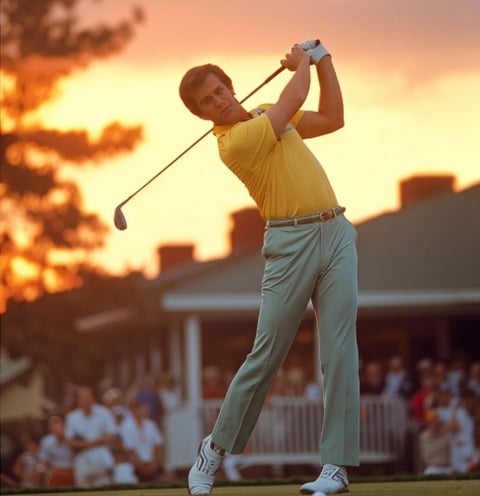

Historical Context of Golf Fashion
The evolution of golf fashion has been significant, moving from the formal and restrictive traditional golf attire of the early 20th century, where golfers frequently wore three-piece suits, ties, and tweed caps that limited comfort and movement during play. The earliest golf clothing was designed with practicality in mind, using fabrics and materials that protected Scotland's adverse weather conditions, with elements like full suits, pork-pie hats, and thick tweed jackets serving both protective and aesthetic purposes. In the pre-1920 era, traditional golf attire included knickers resembling knee breeches, paired with formal collared shirts and neckties, reflecting the styling norms of that time. The evolution of golf fashion is continually shaped by cultural shifts, advancements in fabric technology, and the modern golfer's desire for personal style and functionality. Dress codes in golf have undergone a significant shift, with contemporary golf attire reflecting a blend of style and functionality, differing markedly from traditional formal styles and highlighting the sport's ongoing transformation.
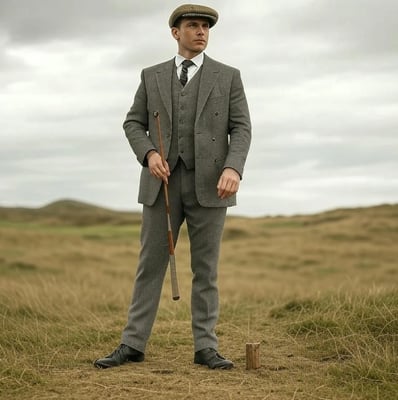

The Pastel Era: When and Why Were Pastels Popular?
The mid-20th century, particularly the 1950s and 1960s, saw golf fashion characterized by pastels—soft, light colors like pink, mauve, and baby blue, as noted in sources like Aesthetics Fashion: The History of Pastel Fashion. These colors were part of a broader shift towards more casual attire, as golfers moved away from the formal gray suits and tweed jackets of the early 20th century. Research from GREY Journal: History of Men's Golf Fashion indicates that in the 1950s, colored fabrics came into prominence, with the first knitted golf shirt introduced, offering comfort and a new style. Pastels were popular for their soothing aesthetic, aligning with the leisure and elegance associated with golf at the time.
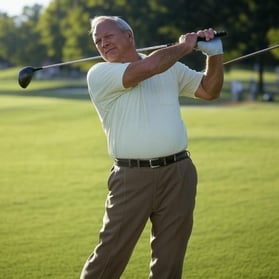


Famous golfers like Arnold Palmer played a significant role in popularizing this look. While specific color details are less documented, sources like Golf Fashion Guide suggest that Palmer's style, often featuring lighter, colorful fabrics, helped cement pastels as a staple. This era's fashion was influenced by broader fashion trends, where bright colors were believed to make individuals look younger and more vibrant, as seen in History of Proper Golf Attire through the Centuries. An unexpected detail is how this period reflected economic prosperity in many Western countries, with golf fashion mirroring the affluent, leisure-focused lifestyle of the time.
Key Features of the Pastel Era:
Knitted polo shirts
Casual slacks
Light, soft colors like pink, mint green, and baby blue
Transition Period: Factors Leading to Change
The 1970s and 1980s marked a significant transition from pastels to performance-oriented wear, driven by several factors. As golf became more competitive and professional, players sought clothing that enhanced performance on the course. Advances in fabric technology, as detailed in From Tweed to Tech: How Golf Apparel Has Adapted Throughout History, introduced synthetic materials like polyester and nylon, offering benefits like moisture-wicking, breathability, and durability. This period saw a blend of traditional styles, with pastels still present, and modern innovations, as noted in The Evolution of Men's Fashion in Golf: From Traditional Attire to Modern Performance Wear.
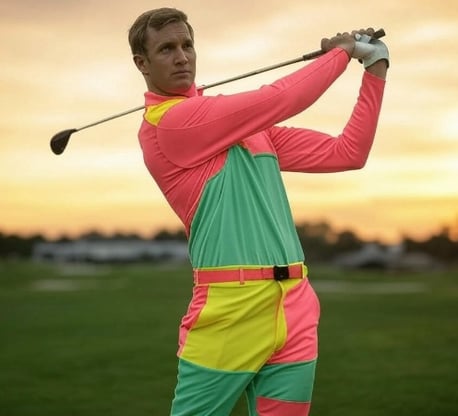

The influence of other sports, like tennis and running, which had already adopted performance wear, also played a role. The 1990s saw a focus on performance-enhancing materials, with a shift toward more subdued colors compared to the bold hues of the 1970s, as per A History of Men’s Golf Fashion. This transition was further fueled by the rise of professional golf and the need for players to perform at their best, with brands like Nike and Tommy Hilfiger incorporating logos and athletic wear influences. An unexpected detail is how this period saw golf fashion influenced by broader societal shifts towards casual and functional clothing, reflecting the growing accessibility of the sport.
Modern Performance Wear: Key Features and Importance
Today, golf fashion is dominated by performance wear, with key features designed to enhance gameplay and comfort. These include:
Moisture-wicking fabrics: Help keep golfers dry by pulling sweat away from the skin, as highlighted in The History of Golf Apparel, Golflink.com.
Stretchable materials: Allow for a full range of motion, essential for the golf swing, as seen in modern collections from brands like Under Armour.
UV protection: Shields golfers from the sun's harmful rays, a feature emphasized in Breezy Golf | Performance Golf Apparel & Accessories.
Temperature regulation: Helps manage body heat, keeping players comfortable in varying weather conditions, as noted in From Tweed to Tech.
Anti-odor properties: Keep clothing fresh even after long hours on the course, a modern innovation in golf apparel.
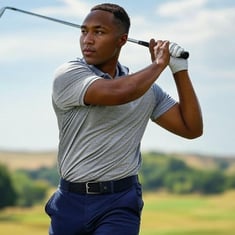

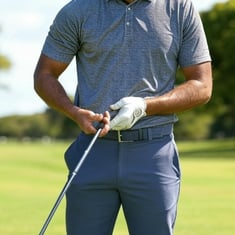
Brands like Nike, Under Armour, and Puma lead this trend, creating apparel that combines style with sophisticated technology, offering UV protection, temperature regulation, and anti-odor properties. This shift reflects golf's evolving demographic, blending tradition with modernity, as seen in the Evolution of golf fashion at THE PLAYERS: Look through decades. An unexpected detail is how performance wear has made golf fashion more athletic and less formal, aligning with the sport's competitive nature and appealing to a broader, more diverse audience.
Table: Key Milestones in Golf Fashion Evolution
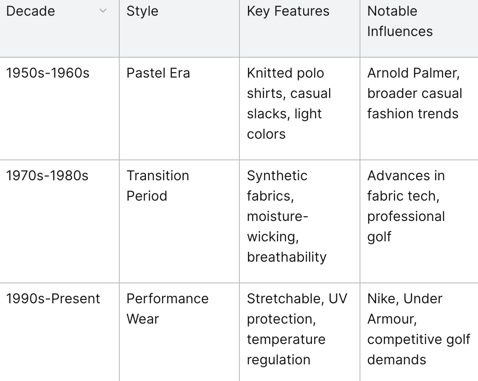

The Evolution of Golf Fashion: From the Suit-and-Tie Era to Functional Attire
In the early 20th century, golfers typically dressed in traditional golf attire, including three-piece suits, ties, and tweed caps, reflecting a formal and aristocratic style. The sartorial choices of golfers during the Suit-and-Tie Era included plaid trousers made from heavy fabrics, tailored jackets with intricate designs, and dress shoes with spikes. While these garments were iconic in appearance, they were impractical for the sport due to their restrictive nature and lack of functionality.
Much of the golf attire from this era was influenced by the harsh weather conditions of Scotland, where the game originated. Durable fabrics were essential to protect against cold and rain, highlighting the dual role of style and functionality in early golf clothing. However, despite its elegance, the Suit-and-Tie Era attire was often criticized for being uncomfortable during play, emphasizing the growing demand for more functional golf clothing that prioritized comfort and ease of movement.
The evolution of golf fashion marks a significant transition from the restrictive traditional golf attire of the early years to more comfortable, performance-driven clothing. This shift reflects the game's adaptation toward athletic functionality, as golfers sought attire that supported their performance rather than hindered it.
Early Golf Attire Before the 1920s: A Formal Yet Impractical Era
During the 19th century, men's golf attire reflected the formal clothing of the Victorian era, with golfers donning heavy woolen jackets, tweed knickerbockers, and stiff-collared shirts. This traditional golf attire prioritized a distinguished appearance over comfort and mobility, shaping the early days of golf into a display of style rather than practicality. Players in this period often wore flat caps to shield themselves from harsh weather conditions, but their golf outfits—made from heavy materials like wool and tweed—remained impractical for the game of golf, restricting movement and athletic performance.
As the 20th century began, the evolution of golf fashion saw golfers embracing knickers, long socks, and tweed jackets, mirroring the era’s cultural shifts toward formality and social status. Before 1920, golf clothing was tailored to protect against weather conditions, especially in Scotland where the sport thrived. This focus resulted in layered ensembles featuring thick tweed jackets and waistcoats that, while effective for warmth, severely limited shoulder movement and hindered the golf swing. The traditional golf attire of the time also included full suits, pork-pie hats or wide-brimmed caps, formal collared shirts, and neckties, reinforcing the game of golf’s historical emphasis on an aristocratic style over functionality
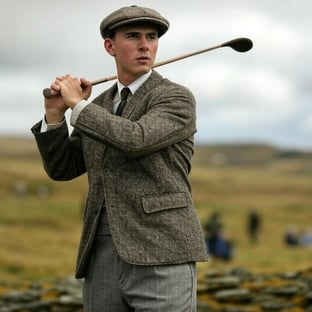
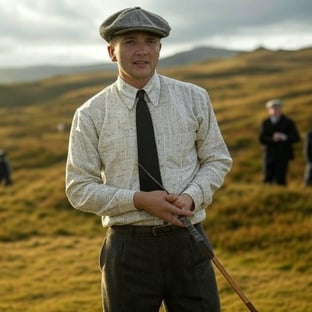
Mid-Century Transition to Casual Styles in Golf Fashion
From the 1960s onward, golf fashion underwent a remarkable evolution, shifting from the muted, formal tones of gray and khaki to vibrant colors like greens, blues, and reds in both pastel and dark shades. This cultural shift marked the rise of casual styles in golf attire, driven by a blend of style with functionality and influenced by broader fashion trends. Golfers and professional golfers embraced this change, moving away from stiff, traditional outfits toward athletic wear that offered both comfort and personal expression on the course.
One key figure in this evolution of golf fashion was President John F. Kennedy, who popularized casual styles with his iconic ‘Go to Hell’ trousers. These colorful, shorter designs stood out with their bold patterns, signaling a departure from convention and inspiring golfers to experiment with designs that reflected their individuality. During this transformative period, golf attire often featured dark, bold-colored tops paired with lighter trousers or shorts, creating striking visual contrasts that aligned with mainstream fashion movements and elevated the sport’s aesthetic appeal.
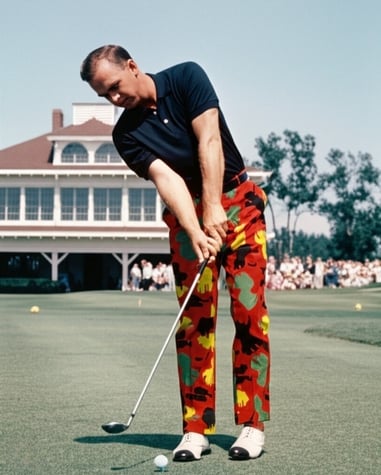

The shift in golf fashion also caught the attention of major brands like Footjoy, Adidas, and Nike, which seized the opportunity to launch innovative lines of golf clothing. These brands introduced athletic wear infused with vibrant colors, patterns, and modern designs, catering to the growing demand for variety in styles and cementing golf’s place in the broader fashion trends of the era. This period marked a turning point where golf fashion became as much about performance as it was about style.
Celebrity players like Arnold Palmer further propelled this cultural shift, playing a pivotal role in popularizing khaki trousers and stylish golf shoes. Palmer’s influence helped establish enduring trends that bridged professional golfers with mainstream fashion, blending comfort with sophistication. His adoption of these modern trends not only redefined how golfers dressed but also left a lasting legacy that continues to shape modern golf fashion today.
The 1960s: A Pivotal Era in Golf Fashion and Athletic Golf Apparel
The 1960s marked a fundamental shift in the landscape of golf fashion, transforming the game of golf with an infusion of Bold Colors, innovative designs, and state-of-the-art fabrics. This era redefined traditional golf attire by merging classic aesthetics with modern design and athletic functionality. Golfers—both professional golfers and amateur players—began embracing vibrant hues like greens, blues, and reds that stood in stark contrast to the once-dull palettes of the 20th century.
Revolutionary Influences and Iconic Styles
Legendary golfer Arnold Palmer played a pivotal role in this evolution. His signature look—featuring brightly colored polo shirts paired with traditional slacks—ushered in a new wave of golf clothing that prioritized both comfort with style and performance. Iconic designs, such as the Go to Hell trousers, became popular among casual players due to their eye-catching patterns, shorter lengths, and innovative blend of comfort and movement. These shifts not only catered to the modern golfer but also set the stage for the integration of Athleisure trends into golf apparel.
Innovations in Materials and Design
Major sportswear brands like Footjoy, Adidas, and Nike quickly recognized the demand for fashion-forward design that balanced traditional golf aesthetics with contemporary needs. They launched lines featuring smart fabrics—including moisture-wicking, breathable, and eco-friendly materials—ensuring that every piece offered optimal weather resistance and freedom of movement. From collared shirts to lightweight jackets and even tweed jackets, these innovations provided golfers with stylish options that supported both performance and personal style.
Broad Impact on Golf Fashion Trends
The 1960s not only influenced the golf wardrobe for men but also paved the way for the evolution of women in golf. The era’s dynamic blend of classic golf style and contemporary golf attire would eventually lead to gender-agnostic designs, inclusive sizing, and a broader range of golf outfits—from golf skirts and Golf Dresses to modern golf polos. This transformative period created a seamless blend of style and functionality, which remains a crucial factor in today’s golf fashion trends and athletic wear innovations.
A Lasting Legacy in Golf Apparel
The journey of golf fashion from the 1960s onward is characterized by continuous advancements in fabric technology and a dedication to sustainable practices. With the introduction of Synthetic Fabrics and technical fabrics that offer enhanced performance wear, modern golf apparel continues to honor its roots while adapting to contemporary needs—whether it’s for a formal golf outing or a casual day on the course. Today’s golf clothing combines traditional golf aesthetics with the athleisure influence, reflecting broader trends in both golf fashion and mainstream athletic performance.
This pivotal era remains a testament to the transformative power of innovative design and sustainable materials in shaping the future of golf attire—ensuring that the game of golf evolves in style, comfort, and performance.
Emergence of Vibrant Colors in Golf Fashion: A Bold Shift in Athletic Wear
The evolution of golf attire since the 1960s represents a pivotal shift in the landscape of golf fashion. Traditional, muted hues have given way to an array of vibrant colors—from bold greens, blues, and reds to refined pastel tones and deeper shades—transforming the very essence of the golf wardrobe. This change not only redefined classic golf style but also paved the way for modern, athletic golf apparel that blends comfort with style and performance.
Iconic figures, including influential casual players like President John F. Kennedy, popularized colorful and lightweight trousers, sparking a departure from conventional golf attire. Their trendsetting choices inspired an era where Polo Shirts, collared shirts, and innovative jacket designs became synonymous with the modern golfer’s desire for both comfort and freedom of movement. This shift was further enhanced by the incorporation of smart fabrics and technical materials such as moisture-wicking, breathable fabrics, and eco-friendly materials, which ensured that the clothing met both aesthetic and performance needs.
The 1980s saw an influx of bold and vibrant patterns that aligned with broader mainstream fashion and athleisure trends. This period marked the rise of fashion-forward design in golf clothing, where athletic wear began to incorporate advanced fabric technologies and innovative design elements. The emergence of synthetic fabrics and sustainable materials in the 1990s and early 2000s allowed golfers to experiment with solid colors, stripes, and checks—demonstrating a clear shift from subdued pastels to designs that showcased a unique personal style and an impressive range of motion.
Impact of Runway Trends on Golf Fashion: Marrying High Fashion with Athletic Functionality in Women's Golf Skirts
Women's golf skirts have evolved dramatically, incorporating runway trends that blend high-fashion elements with top-tier performance features. This transformation reflects a perfect blend of modern design, innovative design, and athletic functionality that appeals to both female golfers and the modern golfer at large.
Today's golf skirts utilize eco-friendly fabrics, breathable materials, and smart fabrics—including moisture-wicking fabrics and synthetic materials—to meet performance standards while offering exceptional comfort with style. This infusion of advanced fabric technologies ensures optimal weather resistance and a full range of motion, making the skirts perfect for any weather conditions on the course.
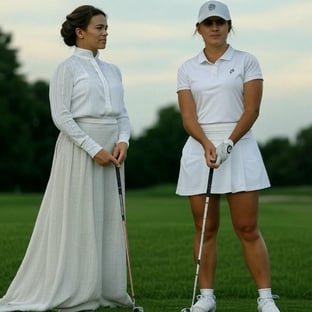
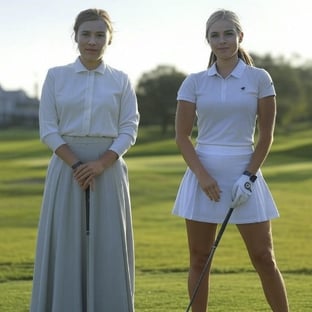
Runway-inspired trends have expanded the color palette beyond traditional whites and pastels, introducing vibrant colors, Bold Colors, and bold patterns that exude a fresh, fashion-forward aesthetic. The influence of haute couture is evident in the use of vibrant patterns and innovative designs, which allow modern women to express their style while maintaining the athletic wear functionality essential for the game of golf.
The shift toward a more casual silhouette is part of a broader trend where athleisure meets traditional golf fashion. The evolution of women's golf skirts now reflects a harmonious amalgamation of classic golf style with contemporary elements—transforming the golf wardrobe into an array of stylish options. This includes a move toward inclusive sizing and gender-agnostic designs, ensuring that golf attire remains accessible to a diverse range of players, from professional golfers to casual players.
Collaboration Between Designers and Sports Brands: Revolutionizing Modern Golf Fashion
In the dynamic world of golf fashion, strategic collaborations between renowned designers, sports brands, and influential celebrity players have played a pivotal role in transforming the golf wardrobe. Leading brands now partner with top athletes, trendsetting casual players, and celebrated artists to create limited-edition apparel and footwear that merge high fashion with traditional golf attire. This innovative synergy blends fashion-forward design with functional athletic wear, incorporating advanced fabrics like moisture-wicking, smart, and eco-friendly materials to deliver unmatched comfort with style and optimal performance wear on the course.
Malbon Golf exemplifies this transformative collaboration by merging urban streetwear with classic golf clothing. Teaming up with industry giants like Footjoy, Nike, and Adidas, Malbon Golf offers diverse collections that feature everything from Polo Shirts and collared shirts to lightweight jackets and even modern golf skirts. These collections showcase Bold Colors, vibrant patterns, and innovative designs inspired by haute couture, all while maintaining the core functionality essential for the modern golfer—be it a professional golfer or an enthusiastic amateur golfer.


Industry leaders in golf apparel are setting new standards by embracing gender-agnostic designs and inclusive sizing that cater to female golfers and modern women alike. By fusing traditional golf aesthetics with contemporary elements drawn from the athleisure trend, these collaborations create a perfect blend of classic golf style and modern athletic functionality. The result is a transformative approach that redefines the landscape of golf fashion—merging wearable technology with advanced fabric technologies and sustainable practices to ensure top-tier athletic performance and weather resistance.
This collaborative revolution in golf apparel not only enriches the exclusivity and appeal of golf fashion but also enhances the modern golfer's experience by merging style and technology. As these partnerships continue to drive the evolution of golf fashion, they set the stage for a future where every piece of golf clothing embodies a fresh perspective on comfort, movement, and personal expression on and off the course.
The Role of Technology in Modern Golf Wear: A Perfect Blend of Style, Comfort, and Functionality
In the dynamic landscape of modern golf fashion, technology plays a pivotal role in transforming the traditional golf wardrobe into a collection of innovative, performance-driven pieces. Today’s golf polos and collared shirts incorporate smart fabrics embedded with advanced features such as biometric monitoring, temperature regulation, and sensor technology. This integration allows both professional golfers and amateur golfers to receive real-time feedback on their game and physical condition, ensuring top-tier athletic performance while embracing comfort with style.
High-tech materials like Gore-Tex, Dri-FIT, and polyester spandex blends showcase the evolution of golf fashion by offering unmatched weather resistance and flexibility. These moisture-wicking fabrics, along with breathable, eco-friendly, and synthetic materials, not only enhance comfort and freedom of movement but also create a perfect blend of traditional golf aesthetics with contemporary golf attire. Whether it’s Polo Shirts, lightweight jackets, or even innovative golf skirts designed for female golfers and modern women, each piece is a testament to the fusion of fashion-forward design and advanced fabric technology.
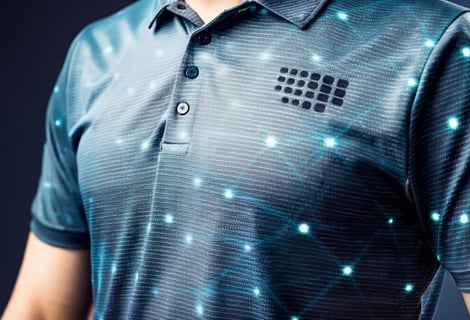

Wearable technology is also reshaping golf clothing, with innovations like shirts that feature embedded sensors and smartwatches designed specifically for the game of golf. This breakthrough in wearable technology exemplifies how advanced fabric technologies and technical fabrics can coalesce to provide a seamless amalgamation of athletic functionality and personal style. The result is an impressive range of golf outfits that not only meet the demands of various weather conditions but also reflect the broader athleisure trend—merging athletic wear with everyday, casual wear.
As brands continue to explore innovative design and sustainable practices, the role of technology in modern golf wear remains a crucial factor in redefining the journey of golf fashion. By integrating features like moisture-wicking fabrics, UV protection, and smart, sensor-embedded textiles, today’s golf apparel offers an extensive array of stylish options. These include Bold Colors, vibrant patterns, and sleek designs that cater to a wide audience—from professional golfers and celebrity players to casual players and modern women—all seeking that ideal blend of style and functionality on and off the course.
High-Tech Fabrics and Materials: Advanced Innovation in Modern Golf Fashion
Modern golf fashion is undergoing a transformative shift with the integration of high-tech fabrics and advanced fabric technologies. Materials like Gore-Tex offer exceptional weather resistance by providing waterproof and windproof qualities, ensuring that golfers and players remain dry during inclement weather conditions. These technical fabrics are now a crucial component of the golf wardrobe, bridging the gap between traditional golf attire and contemporary golf attire while emphasizing comfort and athletic functionality.
Dri-FIT technology exemplifies the evolution of Moisture-wicking fabrics in athletic golf apparel. By drawing sweat away from the body, Dri-FIT helps regulate temperature and maintain comfort with style during play. This innovative design is a perfect blend of performance wear and innovative design, enabling both professional golfers and casual players to experience optimal range of motion and ease of movement on the course.
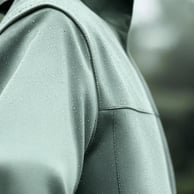
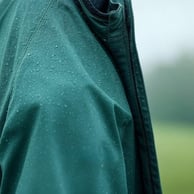
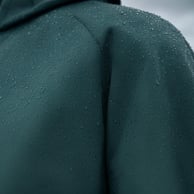
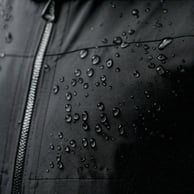
Additionally, Polyester Spandex blends combine superior stretch and durability, ensuring a full range of motion while preserving the fit of Polo Shirts, collared shirts, and other essential golf clothing. These synthetic materials offer an amalgamation of comfort, athletic wear, and a modern aesthetic that transcends traditional fabrics like cotton, marking a pivotal role in the evolution of modern golf fashion.
The advancement of smart fabrics is set to revolutionize the game by integrating features such as biometric monitoring and temperature regulation. This incorporation of wearable technology not only provides real-time feedback to optimize player performance but also merges innovative design with top-tier performance. With these cutting-edge materials, today's golf apparel—whether designed for female golfers, modern women, or amateur golfers—exemplifies a blend of sustainable materials, eco-friendly fabrics, and athleisure trends that perfectly balance style with functionality.
Performance Features: Breathability and Flexibility in Modern Golf Fashion
Modern golf apparel seamlessly blends comfort with style and athletic functionality through advanced fabrics and innovative design. Today's golf shirts and Polo Shirts integrate moisture-wicking fabrics that effectively manage sweat, ensuring that golfers—from professional golfers to casual players—remain dry and comfortable during competitive play.
The incorporation of four-way stretch materials allows these garments to accommodate natural body movements, providing a full range of motion without restricting flexibility. These breathable fabrics are now a standard in modern golf fashion, enhancing ease of movement and aligning with the broader athleisure trend that redefines traditional golf attire.
Many contemporary golf outfits also feature UV protection, safeguarding players from harmful sun exposure while withstanding various weather conditions. This commitment to performance extends beyond basic functionality; modern golf apparel leverages technical fabrics, smart fabrics, and synthetic materials to create a perfect blend of sustainable materials and high-performance wear.
Whether you're outfitted in a classic collared shirt, a modern Polo Shirt, or lightweight jackets designed with eco-friendly materials, today's golf clothing offers an amalgamation of innovative design and advanced fabric technologies. This evolution in golf apparel underscores a pivotal role in the journey of golf fashion, ensuring that every piece not only meets the demands of the game but also enhances the overall experience on the green.
Sustainability in Golf Fashion: The Shift Toward Eco-Friendly Innovation
The evolution of golf fashion in the 2020s is being driven by a commitment to sustainable materials and eco-friendly fabrics, reshaping the landscape of modern golf fashion. Brands are prioritizing environmental impact by utilizing organic cotton, recycled polyester, and other sustainable practices to create high-performance golf clothing that aligns with contemporary demands.
Eco-friendly materials like lighter fabrics and breathable fabrics are becoming integral to golf outfits, ensuring comfort and functionality without compromising on performance. The golf polo, a staple of traditional golf attire, continues to evolve with smart fabrics and technical fabrics that enhance moisture-wicking properties while reducing waste and emissions.
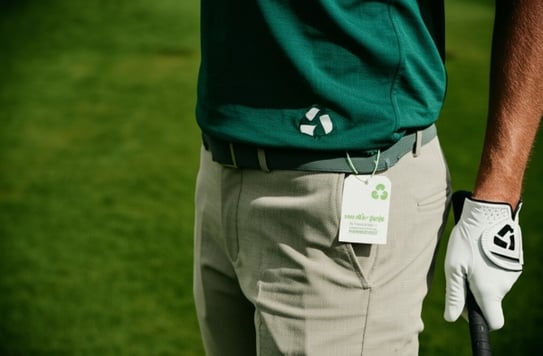

For female golfers, golf skirts are now integrating sustainable luxury, blending fashion-forward design with performance wear that meets rigorous standards. The rise of athleisure trends has also encouraged a shift toward modern designs that incorporate sustainable practices, appealing to both professional golfers and casual players who seek a balance of style with functionality.
As the industry moves forward, the impact on golf fashion will continue to be shaped by a growing demand for sustainable materials, inclusive sizing, and environmentally responsible golf fashion trends. This transformative power of sustainability highlights the seamless integration of modern trends and broader fashion trends, ensuring that golfers can embrace top-tier performance while supporting a greener future.
Eco-Friendly Materials and Practices in Golf Fashion
Eco-friendly materials such as organic cotton and recycled polyester are becoming increasingly prevalent in golf fashion, reflecting a rising environmental awareness among golfers and brands. Industry leaders like B. Draddy and Zero Restriction are pioneering this movement by weaving sustainability into their textile production processes. They utilize natural fibers—including cotton, cashmere, merino wool, and alpaca—which rank among the most sustainable options available. These materials not only meet rigorous performance standards but also appeal to eco-conscious consumers who demand environmentally conscious clothing that blends comfort with style.
The shift toward sustainability in golf fashion is gaining momentum as golf apparel manufacturers embrace eco-friendly fabrics. These include synthetic materials like recycled polyester and technical fabrics designed for breathability, weather resistance, and freedom of movement, all while minimizing environmental impact. This perfect blend of functionality and personal style ensures that modern golfers—from casual players to professional golfers—can enjoy high-quality golf clothing that aligns with sustainable practices.
Beyond materials, the industry is investing in innovative dyeing techniques and textile production methods that reduce waste and emissions, underscoring a broader commitment to emissions reduction and waste reduction. These advancements deliver vibrant and lasting colors while shrinking the environmental footprint, showcasing the transformative power of eco-friendly innovations. Such efforts highlight how golf fashion trends are evolving to prioritize sustainability alongside modern design.
This dedication to eco-friendly materials and sustainable practices is reshaping the modern golf wardrobe. It extends beyond aesthetics—enhancing golf shoes and golf apparel—to foster a more inclusive and environmentally responsible approach to the game of golf. As awareness grows, golf fashion is proving it can offer comfort, performance, and style while contributing to a sustainable future.
Brands Leading the Charge for Sustainable Golf Attire
Sustainability is playing a pivotal role in the evolution of golf fashion, with brands prioritizing eco-friendly fabrics and sustainable materials to meet the demands of the modern golfer.
B. Draddy champions sustainable practices by incorporating organic cotton and natural fibers like cashmere, merino wool, and alpaca into their golf clothing, ensuring comfort with style while minimizing environmental impact.
Zero Restriction is pushing the boundaries of sustainable golf fashion by utilizing recyclable fibers, blending athletic functionality with weather-resistant, moisture-wicking fabrics to deliver top-tier performance without compromising on eco-conscious innovation.
The 2020s golf fashion trends highlight a shift toward sustainable materials such as recycled polyester and lighter fabrics, reflecting the growing awareness among amateur golfers, female golfers, and professional golfers alike.
Manufacturers are refining advanced fabric technologies to reduce waste and emissions, reinforcing the industry’s commitment to sustainable fashion. Innovations in dyeing technology ensure that golf polos, golf skirts, and jackets maintain their bold colors and fashion-forward design while supporting environmentally responsible production.
As the landscape of golf fashion continues to evolve, brands merging sustainability with performance wear are setting new standards, proving that style with functionality can go hand in hand with sustainable practices.
Balancing Style with Functionality in Modern Golf Fashion
The evolution of golf fashion has transitioned from classic golf style to a fusion of contemporary trends, where performance-driven fabrics and innovative designs enhance both functionality and aesthetic appeal. Modern golf attire now integrates advanced technology, athleisure trends, and fashion-forward designs, allowing golfers to achieve optimal performance without sacrificing personal style.
1. Versatility of Spikeless Golf Shoes
The introduction of spikeless golf shoes has revolutionized golf footwear, offering affluent players a versatile and comfortable option suitable for both on-course performance and off-course wear. The shift toward sneaker-inspired designs in contemporary golf attire aligns with the broader athleisure movement, ensuring style with comfort.
2. Performance-Driven Designs for Women’s Golf Apparel
Modern female golfers benefit from women’s golf skirts, jackets, and polo shirts that seamlessly blend architectural designs with technical fabrics. The incorporation of moisture-wicking fabrics, four-way stretch materials, and breathable fabrics provides freedom of movement, making golf apparel more functional and stylish than ever before.
3. Smart Fabric Technologies in Golf Fashion
Advancements in golf apparel technology have led to the integration of temperature-regulating materials, stretch-recovery fabrics, and biometric-monitoring textiles in modern golf wear. These innovations optimize comfort with style, ensuring enhanced performance while maintaining a polished look on the green.
4. Innovative Brand Strategies in Golf Apparel
Leading golf brands such as Nike, Adidas, and Footjoy incorporate cutting-edge technologies in golf polo shirts, jackets, and accessories to enhance weather resistance, breathability, and movement flexibility. The shift toward sustainable materials, such as organic cotton and recycled polyester, reflects the demand for eco-friendly golf attire that balances style and function.
Outfit Ideas for Various Weather Conditions: Embracing Modern Golf Fashion
The evolution of golf fashion has transformed the game from traditional, heavy attire designed for cold, rainy, and windy conditions to a modern blend of athletic wear, athleisure trends, and performance-oriented designs. Today's golf wardrobe is built on advanced fabric technologies and innovative design, allowing golfers to face diverse weather conditions without sacrificing comfort with style.
High-tech fabrics like Gore-Tex offer essential waterproof and windproof qualities, ensuring that golfers remain dry and comfortable in inclement weather. Meanwhile, Moisture-wicking fabrics such as Dri-FIT regulate temperature by drawing sweat away from the body, providing the freedom of movement and range of motion required during intense play.
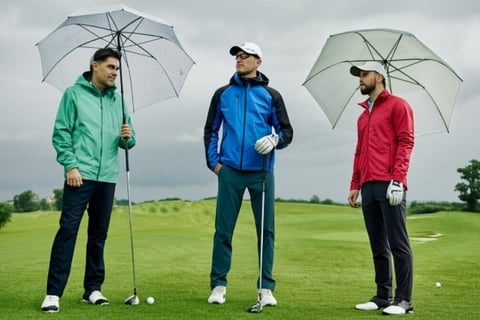

Modern golf outfits now include versatile options such as collared shirts, Polo Shirts, and lightweight jackets that replace traditional knickers and tweed jackets. These contemporary pieces showcase Bold Colors, vibrant patterns, and fashion-forward designs that allow players to express their personal style on and off the course. Moreover, the integration of eco-friendly fabrics and sustainable materials reflects a growing commitment to environmental impact and sustainable practices within the industry.
From ensuring weather resistance with technical fabrics to offering stylish, performance-enhancing options, the modern approach to golf attire perfectly balances functionality and aesthetic appeal. Whether you're a professional golfer, a casual player, or a modern woman making a statement on the green, today's golf fashion delivers a perfect blend of traditional elegance and innovative design to meet any weather challenge.
